1
At the outbreak of the War of 1812, Kingston was a small loyalist town on the north shore of Lake Ontario. The Provincial Marine, which was the organisation responsible for the administration and maintenance of the King's ships on the lake, was located on nearby Point Frederick. While a military presence in the area had existed since 1673, when the French founded Fort Frontenac, it was the establishment of the British Royal Navy on Point Frederick in 1813 that positioned Kingston as a key British military post.Since both the United States and Britain recognized that the side with the largest and most formidable warships would win the lakes, and therefore the war, the "shipbuilding race" began when the war began. The success of the building program rested on the artificers and shipwrights, and on the supply line up the St. Lawrence. During the war, wooden structures were hastily thrown up on the land along the Cataraqui River, on Point Frederick. The artificers themselves constructed these buildings, known as "Shanties".
In 1820, after the war but during an uneasy peace, a survey of these structures was completed, and the shanties were found to be in the "most wretched condition and not worth repair." Commissioner Barrie petitioned the Navy Board for funds to replace the wooden structures with stone buildings. With permission to proceed, Barrie began construction, completing the masonry row by October 1822, with five cottages built at a time. Each cottage was to house one shipwright and his family during peacetime; during times of war, each would house two married men and their families.
Although the Naval establishment was turned over to the Ordnance Department in 1837, the shipwrights and their families continued to live in the cottages until 1865, when the married soldiers of the Royal Canadian Rifle Regiment (RCRR) took up residence in the row of stone houses. The RCRR occupied the Naval Cottages at the time of a destructive fire in 1868, which burned seven of the 16 cottages, rendering them unfit for habitation. While there had been orders against the men cooking in their barrack rooms in the Naval Cottages during the summer months, it was concluded by the investigative board that the cause of the fire was an unauthorized cooking fire.
Following Canadian Confederation in 1867, British troops were withdrawn from the country. This was the end of Britain's military dominance in North America, but not of military presence on Point Frederick. The new government of Canada needed a source of professionally trained officers, and so recommended in 1874 the establishment of a Military College, which was to open in 1876 on Point Frederick, becoming the Royal Military College of Canada. At this time, the burnt cottages were torn down and minor repairs were made to the remaining seven cottages. The Naval Cottages housed the servants of the college until 1910, when new servants' quarters were erected. The Naval Cottages where sold for $110 to Dr. J.G Evans, who began selling the fixtures in April of 1910.
Today, all that remains of the cottages are the below-ground masonry foundations of the long row of 16, and the material remains left behind by their inhabitants. These remnants are covered by carefully manicured lawns and military commemorations, including a torpedo and Sabre jet. In 1998 and 1999, cottages 15 and 16 were archaeologically investigated during the public archaeology field school of the Cataraqui Archaeological Research Foundation, in partnership with the RMC Museum. Recent archaeology under the same program has examined cottages 1 and 10, and has provided insight into the lives of the Naval Artificers and their families.
Excerpted from:
Naval Cottages Archaeological Excavation 1999 report by Susan M. Bazely.
NAC, Copies of the Original British Admiralty Documents held by the Public Records Office, London (MG 12), Navy Board In-Letters from Yards Canada (ADM 106), vol. 1999, 1820-1821, microfilm reel B-1002, "Survey of His Majesty's buildings, wharves &c. at the Naval Establishment at Kingston, October 27, 1820."
2
Kingston, 1815 by Hugh Irvine1815
Point Frederick, Kingston, Ontario, Canada
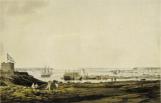 Credits:
Credits:Library and Archives C-145243
3
Detail of a Map of Point Frederick Showing the Location of Possible "Shanties"1820
Point Frederick, Kingston, Ontario, Canada
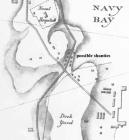 Credits:
Credits:Library and Archives C-16104
4
A Plan Showing the Cross Elevation of the Cottages, 18201820
Point Frederick, Kingston, Ontario, Canada
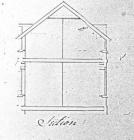
5
View from Cedar Island of the Dockyard at Kingston, by John Arthur Roebuck, circa 1821-1824Circa 1821-1824
Point Frederick, Kingston, Ontario, Canada
 Credits:
Credits:Library and Archives Canada C-121299
6
Kingston from Fort Henry, by James Gray, 18281828
Point Frederick, Kingston, Ontario, Canada
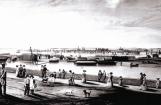 Credits:
Credits:Library and Archives Canada C-002041
7
Detail of a Map of Point Frederick, 18351835
Point Frederick, Kingston, Ontario, Canada
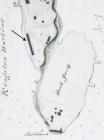 Credits:
Credits:Library and Archives Canada C-22430
8
Proposed Site of the Ordnance Establishment at Kingston, 18381838
Point Frederick, Kingston, Ontario, Canada
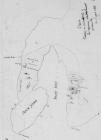 Credits:
Credits:Library and Archives Canada C-3917
9
Detail of a Painting by Hallewell, 18481848
Point Frederick, Kingston, Ontario, Canada
 Credits:
Credits:Royal Military College Collection
10
Detail from Point Henry, by Koellner, 1851, Showing the Naval Cottages1851
Point Frederick, Kingston, Ontario, Canada
 Credits:
Credits:A. R. Winnette
11
Plan and Section of Naval Cottages Number 15 and 16 from Ordnance Estimates, 18531853
Point Frederick, Kingston, Ontario, Canada
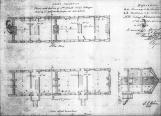 Credits:
Credits:Library and Archives Canada MG12 WO55/866
12
Detail of Plan and Section of Naval Cottages Number 15 and 16, from Ordnance Estimates, 18531853
Point Frederick, Kingston, Ontario, Canada
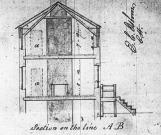 Credits:
Credits:Library and Archives Canada MG12 WO55/866
13
Point Frederick and the Kingston Waterfront, by Whitefield, 18551855
Point Frederick, Kingston, Ontario, Canada
 Credits:
Credits:Queen's University Special Collections
14
Naval Cottages, Kingston, 18651865
Point Frederick, Kingston, Ontario, Canada
 Credits:
Credits:Queen's University Archives